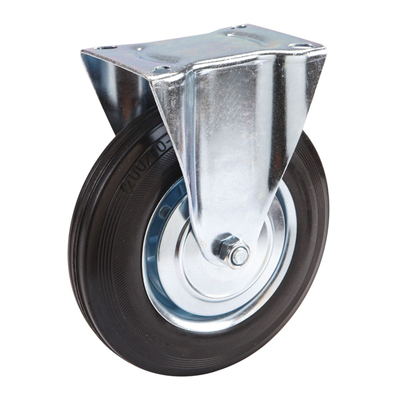“Casters” and “wheels” are related components that serve a similar purpose, which is to facilitate the movement of objects. However, they differ in how they are used and the functionality they provide:
Casters:
- Casters are assemblies: A caster typically consists of a wheel, a bracket or frame, and a mounting mechanism. The wheel is mounted to the bracket, which has a swivel or rigid design, allowing the wheel to rotate or remain fixed.
- Swiveling capability: Casters, especially swivel casters, offer the ability to rotate 360 degrees. This makes them well-suited for applications where the direction of movement needs to change frequently, providing excellent maneuverability.
- Directional control: Casters can be locked or braked to prevent rotation and maintain a fixed direction. This feature is useful for applications that require stability or control, such as when locking a cart in place.
- Variety of applications: Casters are commonly used in industrial equipment, furniture, office chairs, carts, and a wide range of other applications where mobility and flexibility are required.
Wheels:
- Wheels are standalone components: Wheels are the circular components that make contact with the floor or ground and allow an object to roll. They do not include the frame or mounting mechanism.
- Fixed direction: Wheels do not typically provide swiveling capabilities on their own. They only rotate in a fixed direction. To achieve swiveling, wheels must be mounted on a caster with a swivel bracket.
- Simplicity: Wheels are simpler and often more compact than casters. They are often used in applications where a fixed, straight-line movement is sufficient.
- Variety of sizes and materials: Wheels come in a wide range of sizes, materials, and designs to suit different needs. They can be used in various applications, such as on shopping carts, trolleys, and conveyors.
In summary, the key difference between casters and wheels is that casters are more complex assemblies that include a wheel and a bracket with swiveling capabilities, whereas wheels are standalone components that roll in a fixed direction. The choice between casters and wheels depends on the specific requirements of the application, including the need for swiveling, mobility, and control.


